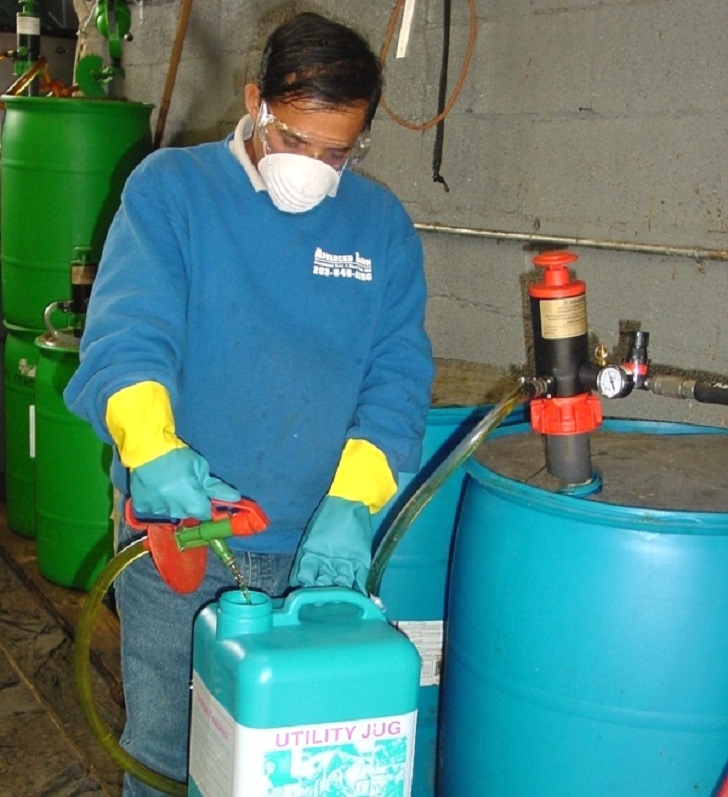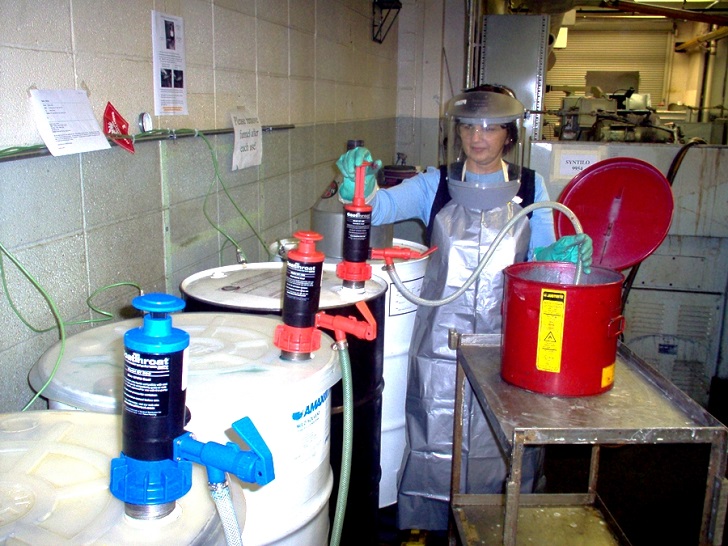Chemicals Taken From Bulk Containers and Transferred
Chemicals taken from bulk container and transferred to in individual containers such as spray bottles must be. This spill collection must be provided with a sump see drainage provision for bund followingSignage for valve status required.

Secondary Container Labels 101 Hazcom And Whmis
The transport of hazardous substances brings significant financial environmental and health-related risks so its.

. As a leader in transloading logistics Colonial Chemical Solutions Inc. Labeled with the common name. Put on a hat.
Once assembled both components become an inseparable unit which can be used as intended. Chemicals taken from bulk containers and transferred to individual containers such as spray bottles must be 41 F Dairy products other than milk must be received at or below. For correct hand hygiene which is acceptable for a food handler.
Your company purchases secondary containers for chemicals which are bottles with pre-printed embossed labels that contain a specific chemical name eg methanol acetone National Fire Protection Association NFPA diamond and health and physical hazard pictograms. Sampling is a vitally important factor in the custody transfer of bulk liquid cargoes. Toxic chemicals require a label with a highly visible sign.
When a substance containing a hazardous chemical is transferred from its original container to a secondary container the secondary container must be labeled with the identity of the chemical and any hazards it presents. A composite Intermediate Bulk Container IBC consists of an outer casing and a rigid plastics inner receptacle. MUST BE fully labeled.
For all your liquid handling product needs. Object Moved This document may be found here. The remaining material had to be transferred to 1-liter containers and sent as lab packs for disposal at significant cost.
Before or after transloading take advantage of our warehousing network for safe secure. Returnable and non-returnable composite IBCs can be used for the storage and transport of both. They have large internal pathways and check valves with flaps to.
The control system should monitor and respond to. Common Bulk Chemicals Ferric Chloride FeCl3 Ferrous Chloride FeCl2 Aluminum Sulfate Al2SO43 Sodium Bisulfite NaHSO3 Sodium Hypochlorite - NaOCl Caustic Soda - NaOH httpwebbooknistgovchemistrycas-serhtml. When a chemical is transferred from its original container to another the second storage device is referred to as a secondary container or workplace container.
Transfer of Class I liquids to smaller containers from bulk stock containers not exceeding 5 gallons in capacity shall be performed in a laboratory hood in an area provided with ventilation adequate to prevent accumulations of flammable vapor exceeding 25 of the lower flammable limit or within an. Evaluate chemical transfer equipment and processes eg fill lines transfer valves piping and receiving tanks and where feasible install and configure safeguards such as interlocks and mitigation measures in the process control system to maintain safe operations during chemical unloading. Bond containers by securely attaching a special metal bonding strap or wire to both containers.
If you need to safely transport chemicals its vital to be aware of the international directives and regulations that must be followed the hazards of chemical transportation and how to avoid them and best practices for moving chemicals both on and off-site. All chemicals transferred from original containers and any prepared solutions. For example if you pour a concentrated disinfectant into a bucket.
Incorporates bulk liquid transloading into its scope of services. This applies equally to chemical petrochemical petroleum product and crude oil shipments. It is not worth the risk.
Given the common practice of transferring chemicals from one container to another OSHA has included requirements for proper secondary container labeling as part of the Hazard. Except for a few cases secondary containers must be labeled. We quickly grew into service and manufacturing eventually branching out into many different industries and becoming the largest and most diverse distributor in the South Eastern United States.
CCI started as a small supply company for the Florida citrus industry in 1983. Smaller containers increase the chance that chemicals to be transferred are in. Be considered where chemicals are transferred from a bulk tanker or other means.
These include the route of entry to the body health hazards physical hazards and any affected organ s. Take extra care when storing materials that in combination may cause a fire or explosion such as combination of oxygen and hydrogen. In section 5D2 the exchange or transfer of chemicals to other trained laboratory personnel is discussed.
If the chemical is transferred from the original manufacturers container to a different container the container must be labeled with a secondary label. Typically this spill retention should be the largest container on a truck or 9000L whichever is lesser. Acquisition and subsequent care and retention of representative samples can provide an important means of rebutting unfounded allegations of cargo contamination.
IF IN DOUBT LABEL IT. 316 Stainless Steel Air-Powered Transfer Pumpsfor Oil Chemicals Fuel and Large Solids. Filled stored carried and emptied.
Do not use universal containers containers for food and such. One common case where you do not have to label a secondary container is if the container is portable and will be used immediately by the person who transferred the chemical into that container. The labels do not include the manufacturers name and address.
With a 316 stainless steel housing and a fluoroelastomer diaphragm these pumps resist a variety of harsh acids and alkalies such as phosphoric acid nitric acid and sulfuric acid. CCS can transfer bulk liquid between a wide range of units including ISO tanks FlexiTanks rail cars and packaged units. No commercial incinerator would handle the material in its bulk form.
Bonding can also be done by keeping a solid metal-to-metal contact between the containers themselves or between a metal container and a conducting nozzle. Unless all contents are used immediately. A food handler with long hair must.
Some liquid transfer pumps have self-bonding hoses. The secondary label must include product identifier and words pictures symbols or combination thereof which provide at least general information regarding the hazards of the chemicals. Also use only containers specially made for this purpose.

Safe Transfer Of Dangerous Liquids

Safe Transfer Of Dangerous Liquids

Unlabelled Containers Chemicals Stored In Drinking Water Bottles Imca
No comments for "Chemicals Taken From Bulk Containers and Transferred"
Post a Comment